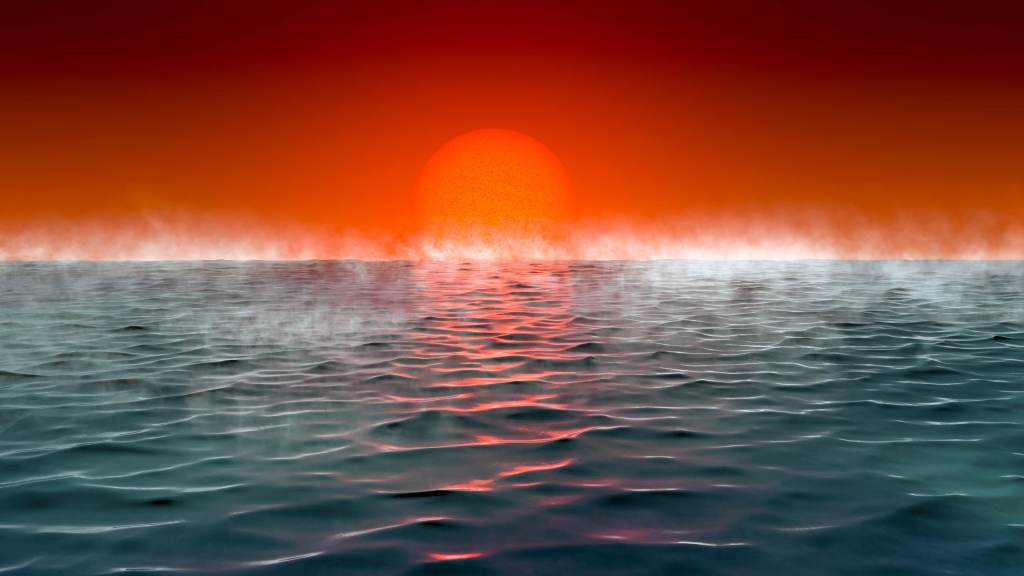A new class of planets with warm oceans could support extraterrestrial life
4 min read

In their search for potentially habitable planets outside our solar system, astronomers have searched for similar exoplanets. Tera. Scientists now have a new class of habitable exoplanets to look out for: Hycean planets.
The name describes hot, ocean-covered planets that have a hydrogen-rich atmosphere — and are much easier to find and observe than would-be Earth twins. Learning more about the Hycean planets could help scientists find vital fingerprints, or signs of life, outside our solar system in the near future. The study was published on Wednesday (25) in the Astrophysical Journal.
“Hycean planets open an entirely new path in our search for life elsewhere,” study lead author Niko Madhusudan, an expert in astrophysics and exoplanet science at the University of Cambridge’s Institute of Astronomy, said in a statement.
There are more than 4,000 known exoplanets outside our solar system. They are considered habitable when they are located in the habitable zone around stars orbiting stars. In this region, the planet is the correct distance from the star for liquid water to have a constant presence – and possibly support life as we know it.
ocean worlds
Some of the Hycean planets are larger and hotter than our own. But researchers believe that these planets have large oceans that could support the type of life that began on early Earth and can still be found in harsh ocean environments.
One of the most attractive features of these planets is the fact that they have a larger habitable zone than Earth or Earth-like planets – so they can still support life, despite being outside the zone our planet must be in in order to sustain life. habitability.
Of the thousands of exoplanets that have been discovered in the past 30 years, many are between the size of Earth and Neptune. Scientists use names like “Superearths” and “Mininetunes” to describe these planets, which can be rocky like Earth or ice giants like Neptune. Or get into a position in between.
Mini-Neptunes are 1.5 times the size of our planet, so they’re still smaller than Neptune, but they’re too big to have a rocky interior like Earth. Under the hydrogen-rich atmosphere, the pressure and temperature would likely be too great for life to support.
However, research by Madhusudan and colleagues recently found that this harsh nature is not always the case. Depending on conditions (including size, mass, and temperature), some of these planets may be habitable.
promising planets
The study led to the new classification of the Hycean planets. It can have a volume of 2.6 times the size of Earth and atmospheric temperatures of nearly 200 degrees Celsius. Beneath the hydrogen-rich atmosphere are oceans that span the entire planet – and there could be microbial life there.
Some of these planets may be tidal occluded, which means they have one side permanently receiving daylight from the star they orbit and the other side being always dark. In this case, tidal-blocked Hycean planets could be habitable on only one side.
Hycean planets are common among the known exoplanets, but they have not been studied as much as superplanets. Perhaps the answer to where life exists outside our solar system lies within this already known range.
Understanding whether a planet within the habitable zone contains the correct ingredients for life means searching for vital fingerprints such as oxygen, methane, nitrous oxide and ozone, or biomarkers including methyl chloride and dimethyl sulfide – properties found on Earth.
“When we looked for these different molecular signatures, we focused on Earth-like planets, which is a reasonable place to start,” Madhusudan said. “But we think the Hycean planets offer a better chance of finding a lot of biometric fingerprints.”
Future telescopes, such as the James Webb Space Telescope, which will be launched in October, will be able to peer into the atmospheres of exoplanets and help scientists learn more about their formation. The Hycean planets could be a promising target for observation. One of these filters, called K2-18b, can detect biosignature molecules.
“It’s exciting that there are habitable conditions on planets so different from Earth,” study co-author Anjali Peet, a doctoral student at the Cambridge Institute of Astronomy, said in a statement.
There are promising planets, both inside and outside our solar system. However, vital fingerprints on an extraterrestrial world have yet to be discovered.
“The discovery of the biometric fingerprint would change our understanding of life in the universe,” Madhusudan said. “We need to be open about where we hope to find life and the form that life can take, as nature continues to amaze us in often unimaginable ways.”
(Translated text click Here To read the original text in English).
Participate:

“Entrepreneur. Music enthusiast. Lifelong communicator. General coffee aficionado. Internet scholar.”

:strip_icc()/s04.video.glbimg.com/x720/11792055.jpg)

:strip_icc()/s03.video.glbimg.com/x720/11786998.jpg)